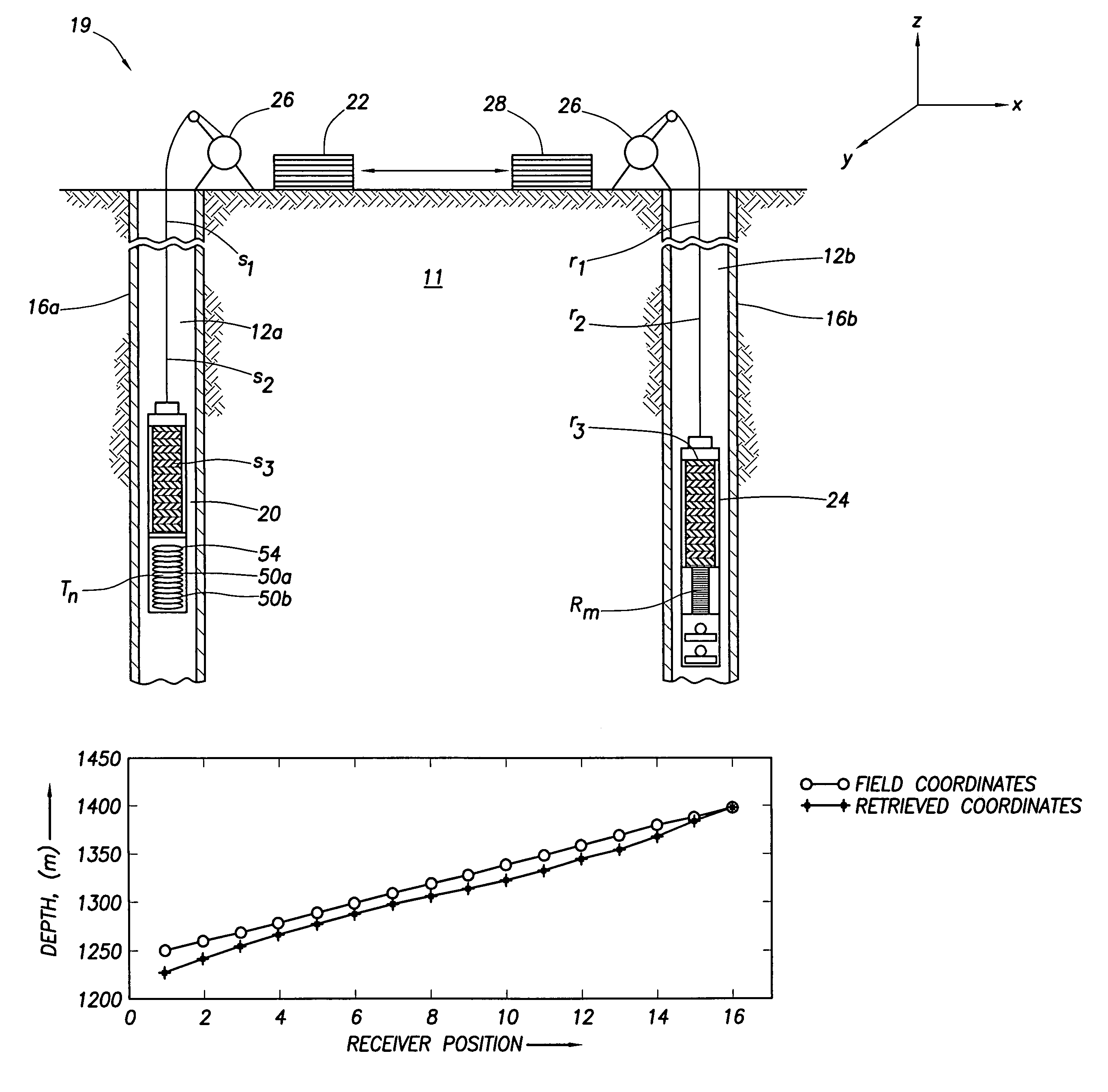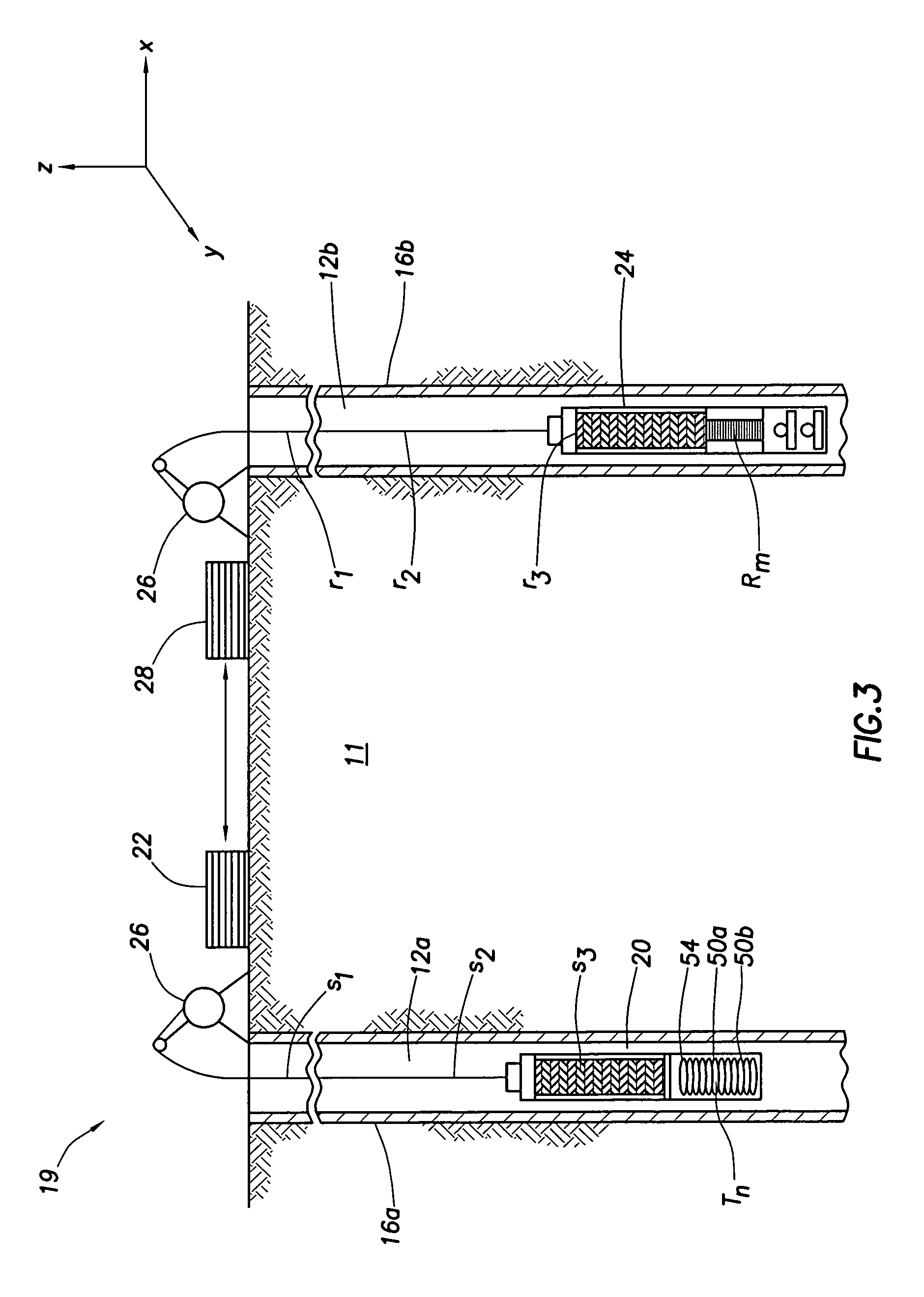Determination of borehole geometry inside cased wells with crosswell electromagnetics
a crosswell electromagnetic and geometry technology, applied in wave based measurement systems, instruments, reradiation, etc., can solve problems such as variable and inconsistent cable loading, actual amount of cable stretching may vary, and problems are encountered
- Summary
- Abstract
- Description
- Claims
- Application Information
AI Technical Summary
Benefits of technology
Problems solved by technology
Method used
Image
Examples
Embodiment Construction
[0026]According to an embodiment of the disclosed subject matter, a regularized inversion formulation removes the casing effects from field data to yield a data set equivalent to one that would be obtained in uncased well. The solution obtained is dependent on the geometry of the survey and the conductivity of the formation being measured.
[0027]Referring to FIG. 1, a geologic formation 11 under analysis includes one or more boreholes, shown generally as 12a and 12b and a reservoir of resources of interests, in this example one or more reservoirs of hydrocarbons, shown generally as 14a and 14b. Typically, at least one of the boreholes 12a and 12b is cased with a conductive liner 16a and 16b, shown more clearly in FIG. 3. A system 19 employed to analyze the geologic formation includes a transmitter 20 disposed within borehole 12a, a first region of the geologic formation. In signal communication with the transmitter 20 is a signal generator included in surface station 22. A receiver 2...
PUM
 Login to View More
Login to View More Abstract
Description
Claims
Application Information
 Login to View More
Login to View More - R&D
- Intellectual Property
- Life Sciences
- Materials
- Tech Scout
- Unparalleled Data Quality
- Higher Quality Content
- 60% Fewer Hallucinations
Browse by: Latest US Patents, China's latest patents, Technical Efficacy Thesaurus, Application Domain, Technology Topic, Popular Technical Reports.
© 2025 PatSnap. All rights reserved.Legal|Privacy policy|Modern Slavery Act Transparency Statement|Sitemap|About US| Contact US: help@patsnap.com



